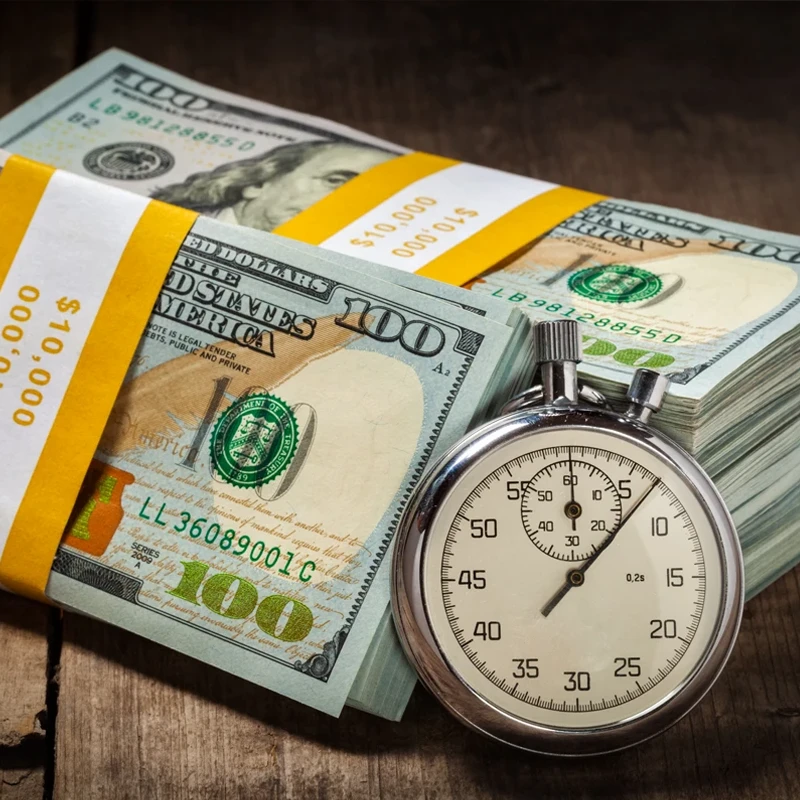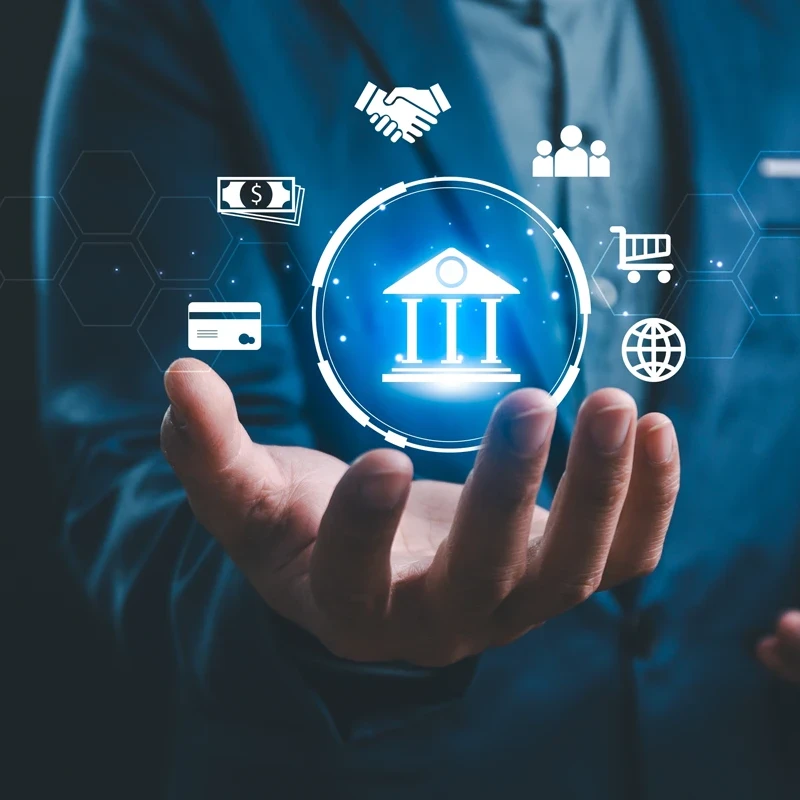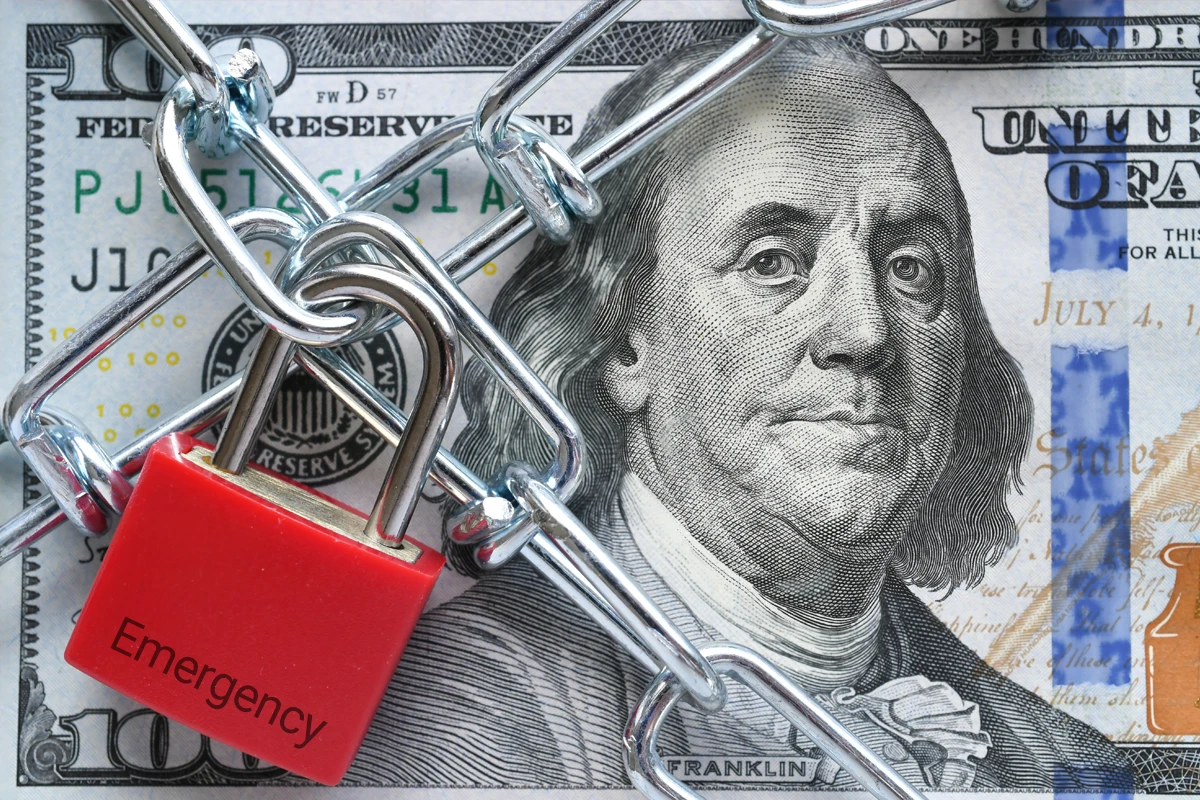If you don’t have an emergency fund, you’re walking a financial tightrope with no safety net. One unexpected expense—a car repair, a medical bill, or a job loss—can send you into a financial spiral, forcing you to rely on credit cards, loans, or even borrowing from friends and family. And once you’re in that hole, climbing out is twice as hard.
Financial power starts with security. The people who control money—banks, lenders, employers—thrive on your desperation. When you have no backup savings, they own you. You’re forced to take bad deals, accept low wages, and pay outrageous interest rates just to stay afloat. But when you have cash reserves, you hold the power. You can walk away from a bad job, negotiate from a position of strength, and avoid debt traps entirely.
This is why the emergency fund is Law 5 in the 48 Laws of Power for Finance. It’s not just about saving money—it’s about protecting your financial freedom and giving yourself leverage in life. The good news? You don’t need to be rich to build one. You just need the right strategy.

The Power of an Emergency Fund
The Ultimate Shield Against Life’s Surprises
Life doesn’t care about your budget. Emergencies will happen—it’s not a matter of if, but when. Without an emergency fund, every unexpected expense becomes a crisis.
Here’s what a solid financial cushion protects you from:
- ✅ Medical Emergencies – A broken bone, unexpected surgery, or a surprise medical bill can wreck your finances overnight.
- ✅ Job Loss – If you suddenly lose your income, having savings buys you time to find a better opportunity instead of taking the first desperate option.
- ✅ Home & Car Repairs – A broken water heater or a dead transmission isn’t just inconvenient—it’s expensive. Without savings, these costs go straight onto high-interest credit cards.
How the Lack of One Destroys Financial Power
- 🔻 Debt Becomes Your Default – No cash? Your only options are credit cards, payday loans, or borrowing money—each of which puts you in an even weaker financial position.
- 🔻 You’re Forced into Bad Decisions – Without savings, you might be forced to sell investments, liquidate retirement funds, or take whatever job you can find, even if it’s terrible.
- 🔻 Financial Stress = Poor Choices – When every decision feels like life or death, you make panic-driven choices. People with savings have the luxury of thinking long-term.
Having an Emergency Fund = Financial Independence
When you have 3–6 months of expenses saved, you’re no longer at the mercy of bad financial situations. You can:
- ✅ Negotiate Better Jobs & Salaries – You’re not desperate to accept the first offer.
- ✅ Say No to Debt – You don’t need to swipe a credit card for unexpected costs.
- ✅ Have Peace of Mind – The best financial power move is knowing you can handle anything life throws at you.
In short, an emergency fund gives you control over your life, your money, and your future. Without one, you’re always one crisis away from financial disaster.

How Much Should You Save?
So how big should your emergency fund be? The answer depends on your lifestyle, income stability, and risk tolerance. But let’s break it down into minimum, ideal, and power play levels so you can set the right goal for your situation.
The Minimum Safety Net (1 Month of Expenses)
If you don’t have anything saved, start here. Your first goal is to cover at least one month of essential expenses—rent, food, utilities, transportation, insurance.
This buys you immediate breathing room if something unexpected happens. It’s not enough for a long-term crisis, but it prevents short-term disasters from turning into long-term debt.
✅ Who is this for? Someone starting from scratch or aggressively paying down debt.
✅ How fast should you hit this? As soon as possible (within 30–60 days if possible).
The Ideal Range (3–6 Months of Expenses)
Once you have a one-month buffer, aim for three to six months of expenses. This is the sweet spot for most people because it gives you enough cushion to:
- Handle a job loss without rushing into a bad career move.
- Cover large unexpected expenses (medical bills, car repairs, home maintenance).
- Absorb temporary income drops without scrambling.
✅ Who is this for? Anyone with a steady paycheck and moderate financial obligations.
✅ How fast should you hit this? Aim to build this within 6–12 months.
The Power Play Strategy (6–12 Months of Expenses)
This is next-level financial security. If you have irregular income (self-employed, freelancer, commission-based work) or just want maximum peace of mind, aim for a full year of expenses saved.
✅ Who is this for? Business owners, gig workers, or anyone who doesn’t have a stable paycheck.
✅ How fast should you hit this? Build this after your investments and other financial goals are in motion.
Power Move: The Step-by-Step Savings Plan
- First, get 1 month ASAP (cut expenses, sell stuff, work extra).
- Then, automate saving for 3 months (small weekly/monthly transfers).
- Finally, scale up to 6–12 months (prioritize while investing).
No matter where you start, your goal is to make sure life’s emergencies never become financial disasters.

Where to Store Your Emergency Fund
Now that you know how much you need, the next question is: where do you put it? The best emergency fund is:
- Accessible (but not too easy to touch).
- Safe from risk (so it’s there when you need it).
- Earning interest (so inflation doesn’t eat it alive).
Best Places to Keep Your Emergency Fund
- ✅ High-Yield Savings Accounts – Best option for most people. Offers liquidity + interest (1–4%). Examples: Ally Bank, Wealthfront, Marcus by Goldman Sachs.
- ✅ Money Market Accounts – Slightly higher interest than savings, but still accessible.
- ✅ Cash Management Accounts – Hybrid accounts that give higher yields but still let you withdraw quickly.
- ✅ Treasury Bills (For Large Funds) – If you have 6+ months saved and won’t need it soon, short-term T-bills (3–6 months) can protect against inflation while keeping your money accessible.
Places You Should NEVER Keep Your Emergency Fund
- 🚫 The Stock Market – Too volatile. You might need the money when the market is down.
- 🚫 CDs (Certificates of Deposit) – Locks your money away, making it hard to access in an emergency.
- 🚫 Under Your Mattress – Inflation eats your money. Plus, it’s not protected from theft or loss.
How to Protect & Automate Your Fund
- Set up an auto-transfer (even $25/week adds up fast).
- Keep it separate from your main bank account (prevents “accidental” spending).
- Use naming psychology – Rename it “Emergency Only – Do Not Touch” in your banking app.
Having an emergency fund isn’t just about saving—it’s about positioning yourself to stay in control when life throws punches.

How to Build It Fast (Without Killing Your Budget)
So you know you need an emergency fund. The question now is—how do you build it quickly without feeling like you’re choking your budget?
The answer: Speed + Strategy. The faster you save, the sooner you gain financial security. Let’s break this down into four power moves.
Step 1. Find Immediate Cash (Fast Wins)
Your first priority is to get one month of expenses saved ASAP. You don’t need to start from scratch—you can create instant cash by tapping into resources you already have.
💰 Sell Stuff You Don’t Use
- Old electronics (phones, tablets, gaming consoles).
- Clothes, shoes, and accessories.
- Furniture or appliances you no longer need.
- Hobby gear (cameras, musical instruments, sports equipment).
💰 Use “Bonus” Money
- Tax refunds – Treat this as an instant emergency fund boost.
- Work bonuses – Instead of spending it, secure your safety net.
- Cashback rewards & rebates – Every extra dollar counts.
💰 Cut One-Time Expenses
- Cancel a vacation or delay a big purchase (temporarily).
- Get a refund for subscriptions or memberships you don’t use.
These moves can easily add up to $500–$2,000 in just a few weeks—giving you a strong head start.
Step 2. Cut Expenses Temporarily (30–60 Days)
Building an emergency fund doesn’t mean you have to suffer forever—it just means you go into sprint mode for a short period. Here’s how:
🔻 30-Day Spending Freeze on Wants
- No restaurants, no new clothes, no unnecessary Amazon orders.
- Cook at home, use what you have, and delay impulse buys.
🔻 Negotiate Your Bills
- Call your internet, insurance, and phone providers. Ask for discounts, promotions, or to cancel unnecessary add-ons.
- Example: Lowering your car insurance by $50/month = $600 saved in a year.
🔻 Pause Subscriptions & Memberships
- Gym, Netflix, Spotify, meal kits—cut them just for 60 days and redirect the savings.
These quick lifestyle shifts can free up $500–$1,000+ in just one month—money that goes directly into your emergency fund.
Step 3. Boost Your Income (Short-Term Hustles)
Cutting expenses is great, but there’s a limit. Increasing your income, even temporarily, speeds up the process exponentially.
⚡ Take on Extra Hours or Overtime
- If your job offers overtime, take advantage of it for 30–60 days and stash the extra cash.
⚡ Side Hustles for Quick Cash
- Freelancing (Fiverr, Upwork, TaskRabbit, Rev.com) – Sell skills like writing, graphic design, or data entry.
- Rideshare & Delivery (Uber, DoorDash, Instacart) – Even 5–10 hours a week can make a big impact.
- Flipping & Reselling – Buy and resell items on Facebook Marketplace, Craigslist, or eBay.
- Online Gigs (UserTesting, surveys, selling printables) – Small money, but adds up.
If you earn an extra $200–$500 per month, your emergency fund builds twice as fast without killing your lifestyle.
Step 4. Automate & Protect It
Once you’ve built some momentum, make sure your fund keeps growing with minimal effort.
✅ Set Up Auto-Transfers
- Even $25/week turns into $1,300+ per year.
- If you get paid bi-weekly, set up an auto-transfer the day after payday.
✅ Create a Psychological Barrier
- Put your emergency fund in a different bank (so you don’t touch it).
- Rename it something powerful like “Break Glass in Case of Emergency” in your banking app.
✅ Use Windfalls for Acceleration
- Every unexpected bonus, tax refund, or gift → send at least 50% straight to your emergency fund.
Once you get to 3–6 months of expenses saved, you’re in power position mode—ready to handle anything life throws at you.

Common Mistakes That Keep People from Success
Saving an emergency fund is simple—but many people get stuck because they fall into common traps. Avoid these mistakes, and your path to financial security becomes way easier.
Mistake #1: “I’ll Start Saving Later”
Reality Check: If you don’t start now, you probably never will.
- Even $10 per week gets the habit going.
- Waiting until you “make more money” is an excuse—because expenses will rise with income.
🔹 Fix It: Automate a small amount today. You can increase it later.
Mistake #2: Treating It Like a Spending Account
Reality Check: An emergency fund is not for vacations, new gadgets, or “I just want it” purchases.
- Every time you dip into it for non-emergencies, you weaken your financial shield.
- Temptation hack: Keep your emergency fund in a separate bank or hide it from your mobile banking app.
🔹 Fix It: Before using the money, ask: Is this a true emergency? If I don’t pay this, will something critical happen?
Mistake #3: Investing Instead of Saving
Reality Check: An emergency fund is NOT an investment.
- The stock market fluctuates too much—what if you need cash during a crash?
- Keep it safe, liquid, and accessible.
🔹 Fix It: Keep your emergency fund in a high-yield savings or money market account.
Mistake #4: Ignoring Inflation & Lifestyle Changes
Reality Check: $5,000 in savings today won’t cover what $5,000 covered five years ago.
- As your expenses increase (rent, insurance, family costs), adjust your emergency fund target.
- Inflation eats cash, so review your emergency savings yearly.
🔹 Fix It: Every year, increase your fund by 5–10% to keep up with rising costs.

The Ultimate Mindset Shift – Think Like the Wealthy
Building an emergency fund isn’t just about having cash in the bank—it’s about thinking differently about money. Most people see money as something to spend. The wealthy see money as something to protect and grow.
If you want financial power, you need to start thinking like those who already have it. Here’s how:
Wealthy People Don’t Live on the Edge
The average person lives paycheck to paycheck, even when they make good money. They assume that as long as they have a steady job, they’re safe.
- ❌ They spend everything they earn.
- ❌ They believe nothing bad will happen to them.
- ❌ They think they can just “figure it out” when disaster strikes.
This is why most people never build wealth—because they never build financial protection first.
Rich people don’t think like this. They know that bad things happen to everyone, and they prepare before the crisis hits.
- ✅ They keep cash reserves so they can handle any problem.
- ✅ They don’t let temporary emergencies force them into long-term debt.
- ✅ They put themselves in a position where they never have to panic about money.
The difference between struggle and power is simple: Do you have cash to handle life’s problems, or are you one emergency away from financial ruin?
If you want financial freedom, it starts with security.
An Emergency Fund is the Foundation of Financial Power
Look at the most successful investors and business owners. They don’t risk everything. They have cash set aside so they can survive any storm.
Without an emergency fund, you’re stuck playing defense—always reacting, always in survival mode.
With an emergency fund, you can start playing offense—taking calculated risks, investing, and seizing opportunities.
Here’s why your emergency fund gives you more power than you think:
- ✅ You can negotiate better. When you’re not desperate, you can walk away from bad deals, bad jobs, and bad situations.
- ✅ You can invest without fear. Knowing you have a cash cushion means you won’t panic-sell during market dips.
- ✅ You can say NO to things that don’t serve you. When you’re financially secure, you make choices based on what’s best for you—not just what pays the next bill.
This is why an emergency fund isn’t just about saving money—it’s about taking control of your life.

Once You Have an Emergency Fund, Your Next Step is…
Now that you’ve built your emergency fund, what’s next? It’s time to level up.
💡 Transition from an Emergency Fund to an Opportunity Fund
- Your emergency fund is your defense. Now it’s time to play offense.
- An opportunity fund is money set aside for investments, business ideas, or big moves.
- This is how you go from financial security to financial growth.
💡 Invest Wisely, But Keep Your Safety Net Intact
- Keep your emergency fund separate from your investments.
- Never invest money you might need within the next 3–6 months.
- Build your portfolio knowing that no matter what happens, you’re covered.
💡 Use Your Financial Power to Make Better Life Choices
- With savings, you can leave a toxic job without stress.
- You can take calculated risks instead of being forced into bad decisions.
- You’re no longer just surviving—you’re strategically building wealth.
Final Call to Action – Start Today
Your first financial power move is security. Start building your emergency fund today.
- ✅ Step 1: Calculate your 3-month emergency fund goal.
- ✅ Step 2: Open a high-yield savings account (Wealthfront, Ally Bank, or Marcus).
- ✅ Step 3: Automate your first transfer—even if it’s just $10 a week.
Every day you wait is a day you’re financially vulnerable. Start now, and put yourself in control.









